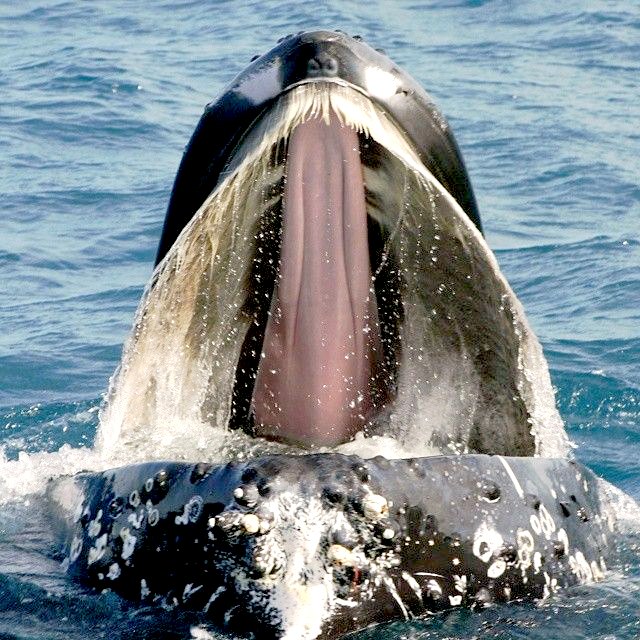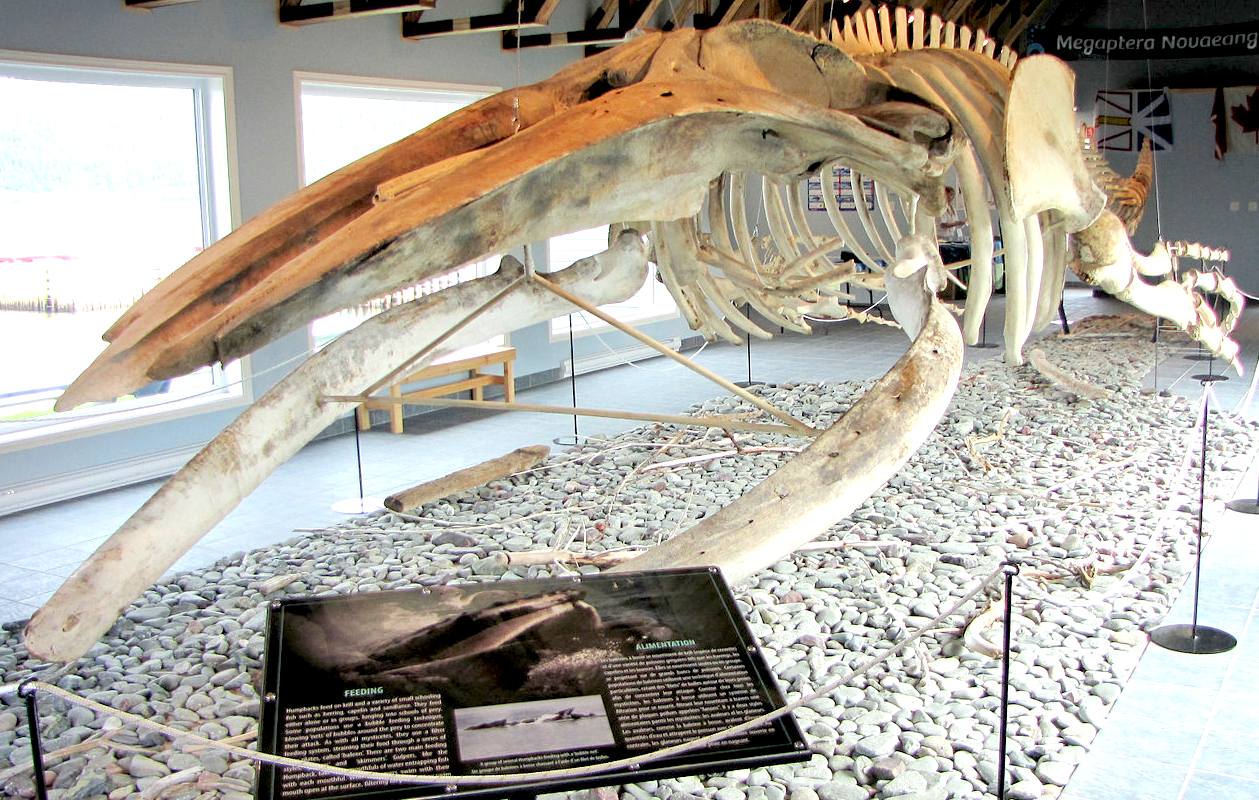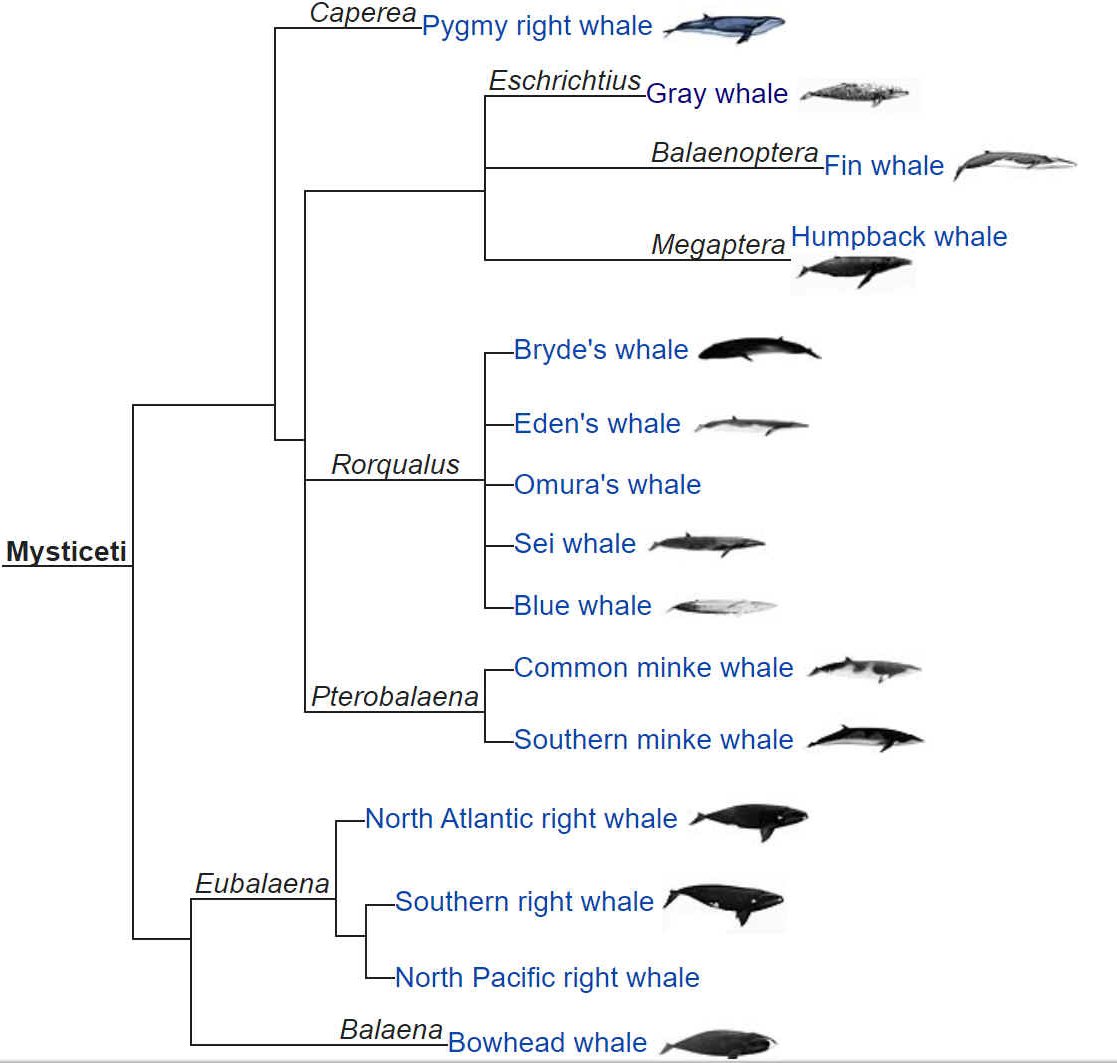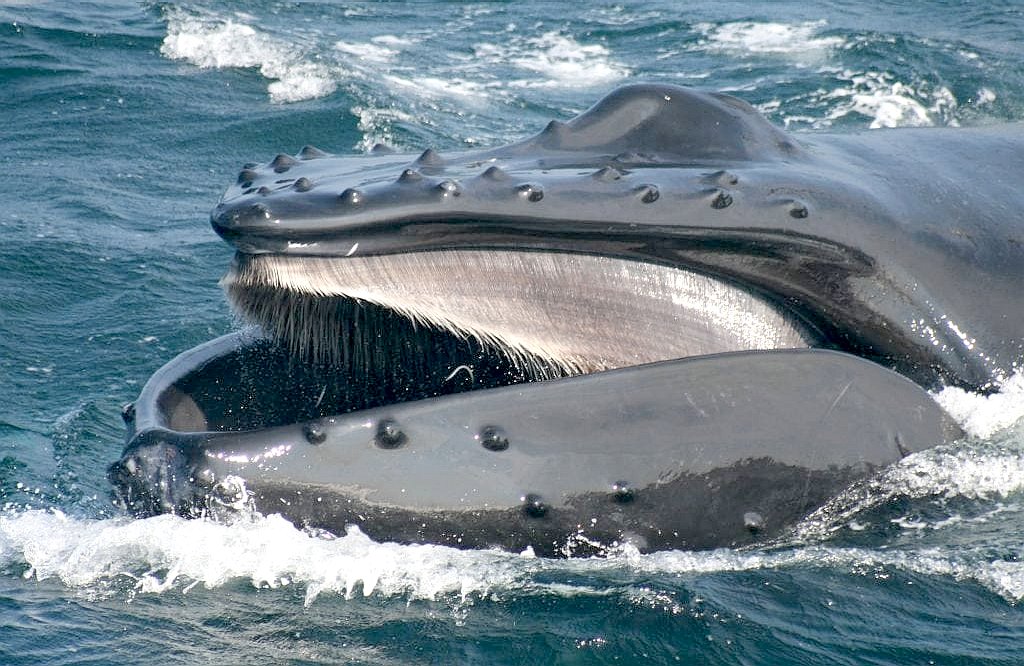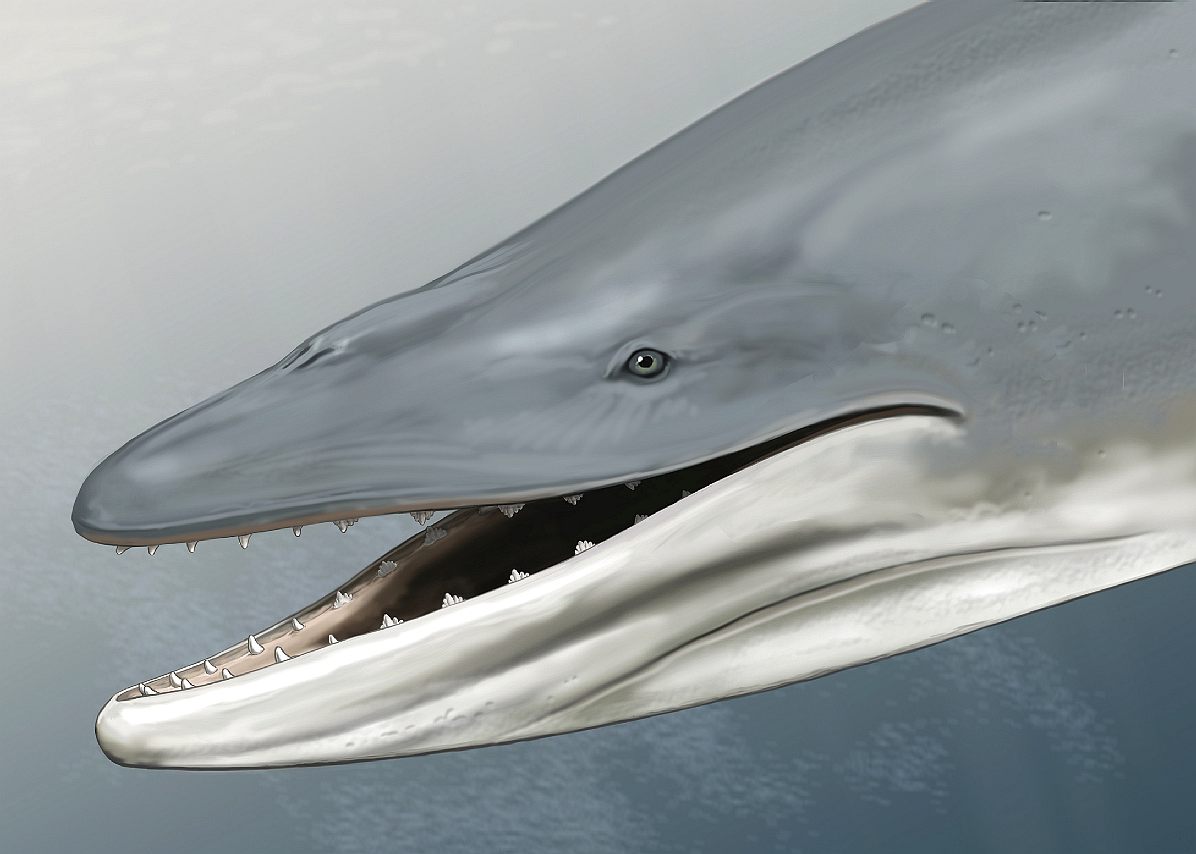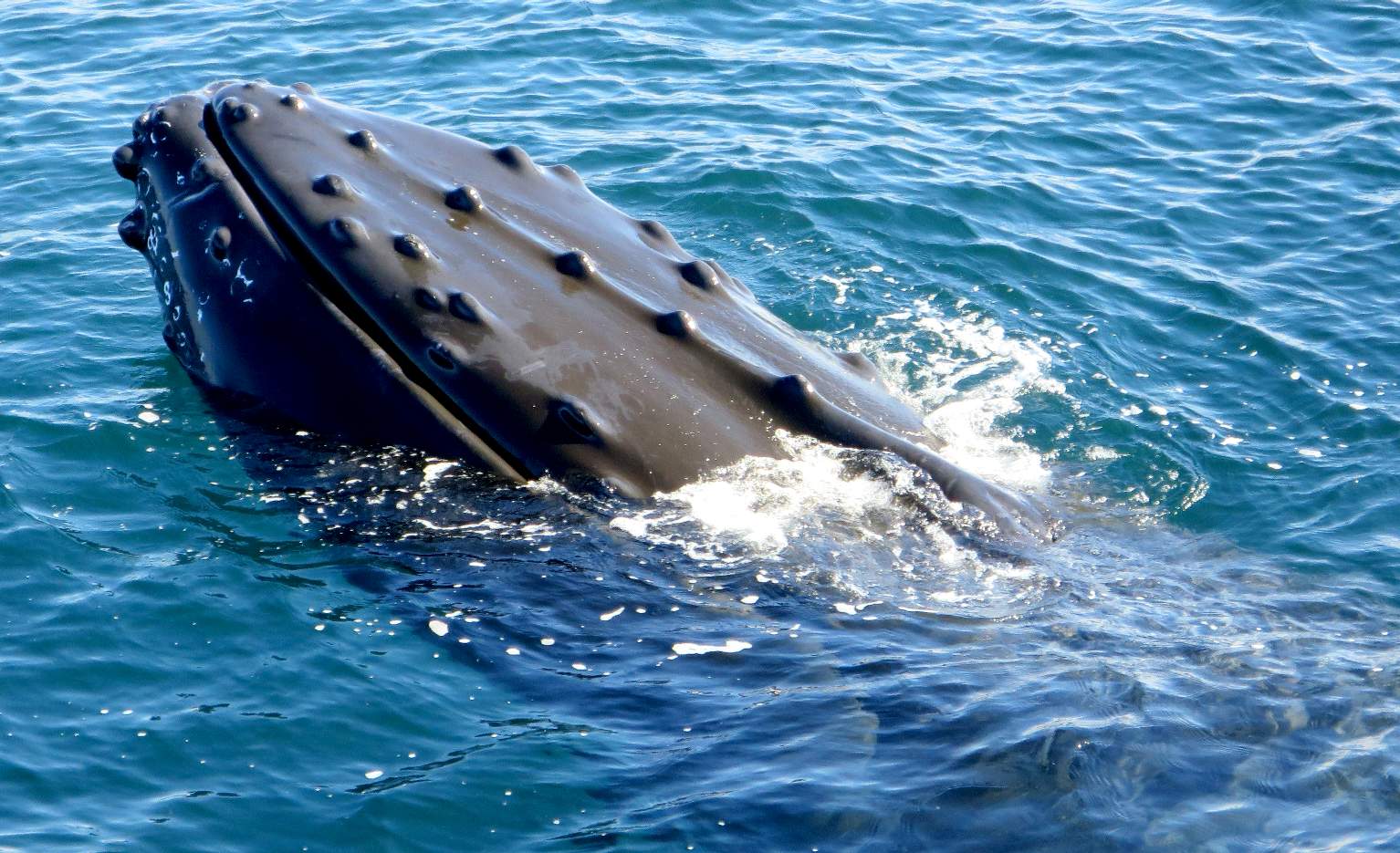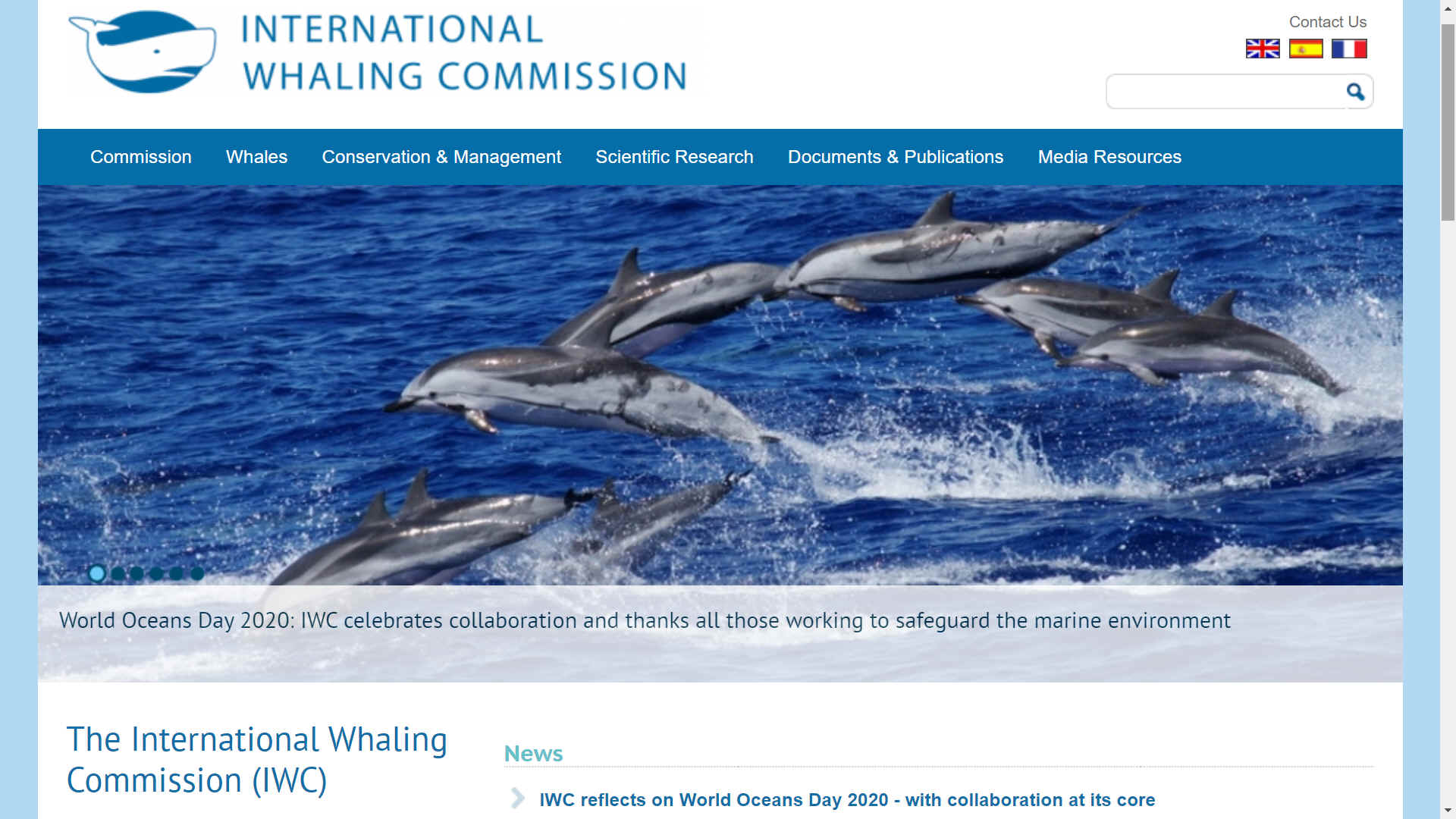|
BALEEN - KERATIN BRISTLE FILTERS
Please use our A-Z INDEX to navigate this site
|
||||||||||||||||||||
It has been estimated that the blue whale takes in up to 3.6 metric tons of krill every day to supply the energy demand of their huge body. It would not be possible to catch enough fish or prey with teeth, to grow to the size of these ocean giants.
It is plain from the size of Blue and Fin whales that the evolutionary move from teeth to keratin filters and parallel development of elastic throats, has allowed whales to become larger as a result of the more efficient (volume) feeding technique.
It also allows the whales to make more efficient use of ocean fauna, by eating smaller animals, so skipping several stages of the food chain, fish eating fish - at each stage reducing the energy yield, though not escaping biomagnification, when it comes to micro plastic toxins.
Baleen whales seek out concentrations of small planktonic animals. The whales then open their mouth and take in enormous quantities of water. When the mouth is closed, they squeeze the water out through the sides, catching the tiny prey on the baleen’s bristles. In the Greenland right whale (Balaena mysticetus), single plates of baleen can reach 5.2 metres (17 feet) long.
Baleen is a keratinized structure like hair, fingernails, and hooves. The baleen filters hang down in two transverse rows, one from each side of the roof of the mouth (palate). Each row contains up to 400 elongated, triangular plates. The longest sides of the plates are smooth and situated along the outer edge of the mouth, whereas the inner sides are frayed into bristles.
Before the invention of spring steel and celluloid in the 19th century, “whalebone,” as baleen was called, was very valuable. Because it is flexible and retains shapes imposed on it with heat, baleen was used for springs and in products such as corsets, knife handles, umbrella ribs, brushes, and fans.
SPLIT PERSONALITY - This humpback whale skeleton reveals that the jaw is in two pieces, with left and right bones hinged such as to be able to spread wider when gulping vast volumes of water. The more seawater and food that is ingested, the easier it is for these gentle giants to survive.
The first toothless ancestors of baleen whales appeared before the first radiation in the late Oligocene. Eomysticetus and others like it showed no evidence in the skull of echolocation abilities, suggesting they mainly relied on their eyesight for navigation. The eomysticetes had long, flat rostra that lacked teeth and had blowholes located halfway up the dorsal side of the snout.
Though the palate is not well-preserved in these specimens, they are thought to have had baleen and been filter feeders. Miocene baleen whales were preyed upon by larger predators like killer
sperm whales and Megalodon.
LLANOCETUS DENTICRENATUS
Llanocetus denticrenatus is an ancient relative of our modern gentle giants, like humpback and blue
whales. Unlike them, it had teeth, and was probably a formidable
predator.
Molecular phylogeny suggests Mysticeti split from Odontoceti (toothed whales) between 26 to 17 million years ago between the late Oligocene or middle Miocene, but the earliest Mysticeti fossils date to at least 34 million years ago.
Their evolutionary link to archaic toothed cetaceans (Archaeoceti) remained unknown until the extinct Janjucetus hunderi was discovered in the early 1990s in Victoria, Australia. While, unlike a modern baleen whale, Janjucetus lacked baleen in its jaw, the anatomy shows sufficient similarity to baleen whales.
It appears to have had very limited apparent bio-sonar capabilities. Its jaw contained teeth, with incisors and canines built for stabbing and molars and premolars built for tearing. These early mysticetes were exceedingly small compared to modern baleen whales, with species like Mammalodon measuring no greater than 3 meters (10 ft). It is thought that their size increased with their exploitation of baleen.
However, the discovery of a skull of the toothed Llanocetus, the second-oldest mysticete, yielded a total length of 8 meters (26 ft), indicating filter feeding was not a driving feature in mysticete evolution.
The discovery of Janjucetus and others like it suggests that baleen evolution went through several transitional phases. Species like Mammalodon colliveri had little to no baleen, while later species like Aetiocetus weltoni had both baleen and teeth, suggesting they had limited filter feeding capabilities; later genera like Cetotherium had no teeth in their mouth, meaning they were fully dependent on baleen and could only filter feed. However, the 2018 discovery of the toothless Maiabalaena indicates some lineages evolved toothlessness before baleen.
STUDY
2018 - The remains of the second oldest baleen whale ever found has revealed that early whales may
not have had baleen. A 34-million-year-old whale skull from Antarctica has well-developed gums and teeth, with no evidence of the baleen plates used in filter feeding.
Hunting whales is forbidden by international law.
LINKS & REFERENCE
https://
Please use our A-Z INDEX to navigate this site
|
||||||||||||||||||||
|
This website is Copyright © 2020 Cleaner Ocean Foundation Ltd
|
